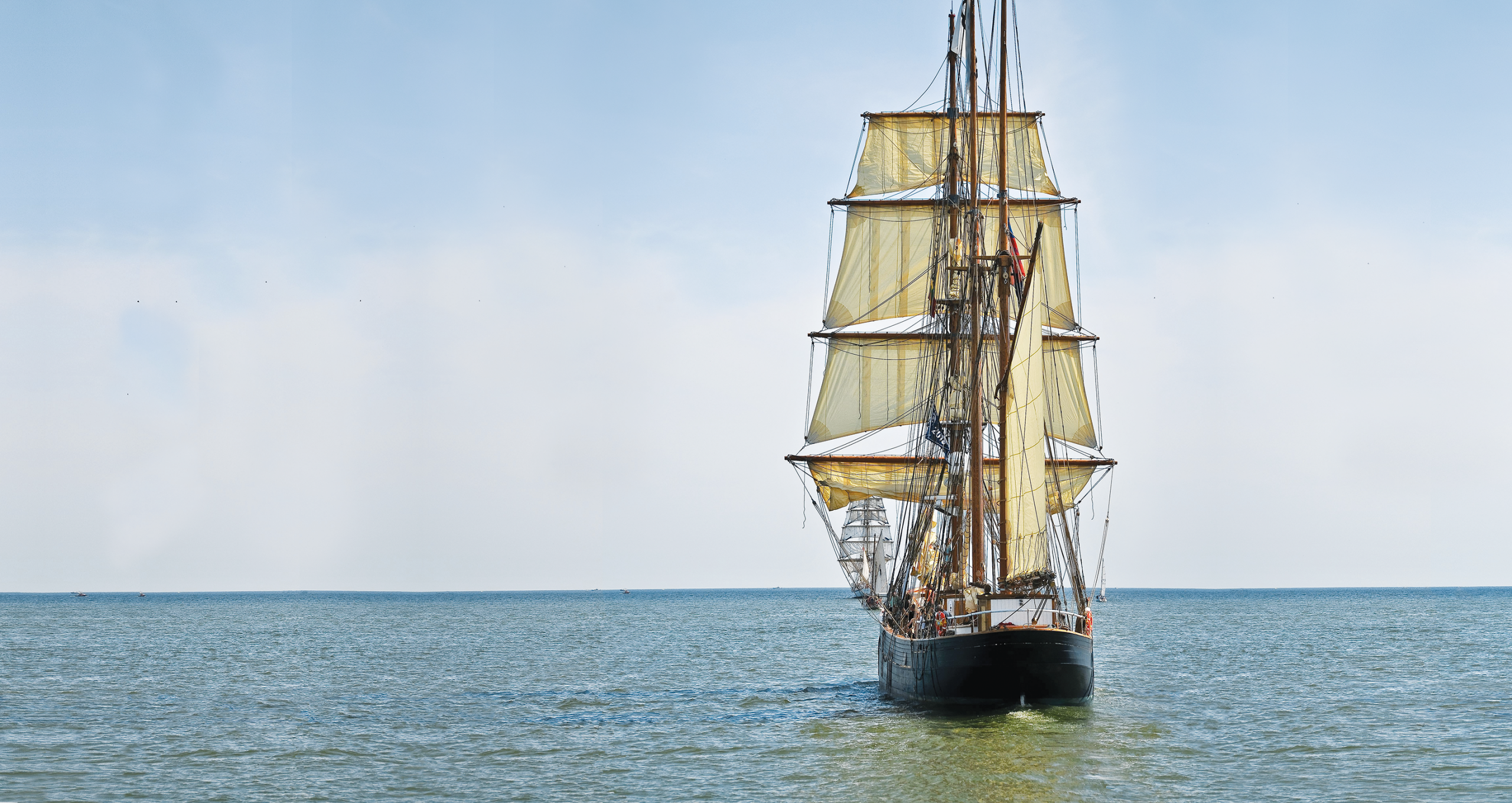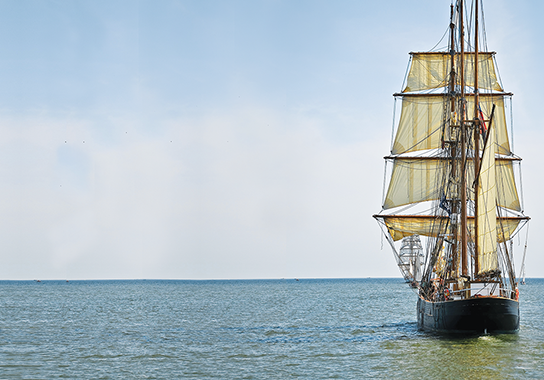At dawn on the morning of September 10, 1813, a lookout spotted six British vessels to the northwest of Put-in-Bay beyond Rattlesnake Island. Immediately Master Commandant Oliver Hazard Perry issued a flurry of orders and made preparations to sail forth to engage the British.
With Perry’s fleet on Lake Erie the British supply route from Fort Malden to Port Dover had been severed. The British had to either fight, or abandon Fort Malden. The British squadron consisted of six ships with sixty-three cannons, while the American flotilla comprised nine vessels and fifty-four guns. The British were armed with long guns that could throw a cannonball approximately one mile, accurately to about one-half mile. The American ships primarily armed with carronades had less than half the range of a long gun. The carronades could inflict much more damage at close range. Perry needed the wind to his back to close within carronade range.
When the squadron sailed from Put-in-Bay harbor at 7 a.m. the American vessels were steering west-northwest; the wind was blowing from the west-southwest. For more than two hours Perry repeatedly tacks his ships in an effort to put the wind to his back, but with no success. The frustrated Perry, conceded to mother nature at 10 a.m., issuing orders to turn his fleet in the opposite direction. But before the order could be executed the wind suddenly shifted and blew from the southeast, placing the wind directly behind the Americans.



